New York City is massive, varied, vibrant, beautiful and ugly, and when you’re on the streets of Manhattan as a wide-eyed tourist, you can feel the city thrumming around you. It’s arguably the capital of the world, and has had to bounce back from devastating storms, floods, fires, terrorist attacks, and more. Perhaps this is part of the reason why authors continue to treat the city so harshly in their fiction: no writer wants to be outdone by reality. Below are five books which feature New York City in various stages of collapse.
Random Acts of Senseless Violence by Jack Womack
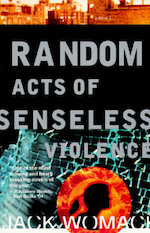 Jack Womack’s Random Acts of Senseless Violence is an under-appreciated classic of near-future science fiction. The book begins on Lola Hart’s twelfth birthday, but hard times have fallen on the girl’s family. Financial pressures have altered their lives, and whilst Lola’s parents insist these changes are temporary, the young girl’s diary tells a different story. It’s not just the Hart family struggling—the whole of New York City is experiencing an economic meltdown, with rampant unemployment, inflation, and outbreaks of disease. There’s also rioting, gang violence, and civil unrest, leading to occupation by a militarised police force.
Jack Womack’s Random Acts of Senseless Violence is an under-appreciated classic of near-future science fiction. The book begins on Lola Hart’s twelfth birthday, but hard times have fallen on the girl’s family. Financial pressures have altered their lives, and whilst Lola’s parents insist these changes are temporary, the young girl’s diary tells a different story. It’s not just the Hart family struggling—the whole of New York City is experiencing an economic meltdown, with rampant unemployment, inflation, and outbreaks of disease. There’s also rioting, gang violence, and civil unrest, leading to occupation by a militarised police force.
Told as a series of diary entries, Random Acts follows Lola as she explores the devolving city, falling in with a group of tough, street-smart older girls. We watch her transform from an innocent child, to someone aged beyond her years—realising the necessity of self-sufficiency, and even violence, if she wants to survive.
In Random Acts, New York City isn’t just a setting; it’s a living, sweating, fighting, dying entity. Womack uses the city’s death throes to illustrate just how tenuous our grip on civility could be in the right (wrong?) circumstances.
Super Sad True Love Story by Gary Shteyngart
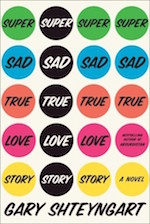 Gary Shteyngart’s Super Sad True Love Story presents an unapologetically dystopian future and a clever satire on Western society’s rampant consumerism, ubiquitous surveillance, and obsession with youth. In the book, America is broke, and even with financial support (read: a buyout) from the Chinese government, the nation is on the brink of a catastrophic breakdown.
Gary Shteyngart’s Super Sad True Love Story presents an unapologetically dystopian future and a clever satire on Western society’s rampant consumerism, ubiquitous surveillance, and obsession with youth. In the book, America is broke, and even with financial support (read: a buyout) from the Chinese government, the nation is on the brink of a catastrophic breakdown.
Super Sad depicts the largely one-sided relationship between Lenny Abramov and Eunice Park. Lenny is thirty-nine years old, and desperate to take advantage of the life-extension technology peddled by his employer. Eunice Park is twenty-four, and the very definition of a Millennial—obsessed with social media and pop culture, with a degree that will likely never lead to any sort of career.
Lenny is hopelessly in love with Eunice, but the younger woman treats him with kind curiosity and a gentle sort of disdain. As Lenny’s dream of eternal life slips further from his grasp, the great American experiment experiences another devastating collapse that might just spell the end of his and Eunice’s sad love story. Whilst the book focusses on the relationships, dreams, and neuroses of its main characters, the societal collapse happening in the background is frightening precisely because of how likely it seems.
The Book of Phoenix by Nnedi Okorafor
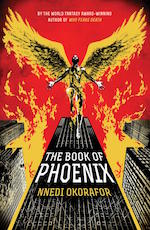 Nnedi Okorafor’s The Book of Phoenix contains stories within stories, but the focus remains on Phoenix—a human (?) weapon created by the evil corporation she calls Big Eye. At the beginning of her story, she resides in Tower 1, located in a New York City turned tropical and largely-flooded thanks to the effects of climate change.
Nnedi Okorafor’s The Book of Phoenix contains stories within stories, but the focus remains on Phoenix—a human (?) weapon created by the evil corporation she calls Big Eye. At the beginning of her story, she resides in Tower 1, located in a New York City turned tropical and largely-flooded thanks to the effects of climate change.
After escaping her creators/tormentors, Phoenix heads to Ghana, but when you’re an incredibly powerful sentient weapon, you have to travel further than that if you wish to find peace. She eventually returns to New York City, but if Phoenix is a vengeful god, then the city is her Gomorrah. It might take more than a few kind souls and some delicious Ethiopian food to convince her that the place shouldn’t be destroyed.
The Book of Phoenix reads almost like a superhero story, following a powerful being with incredible abilities, driven by a desire to do what is right (or at the very least, to harm those who do wrong). But where morality might stay a superhero’s hand, Phoenix burns with rage. It’s a phenomenal book—heartfelt, violent, touching, and brutal.
DMZ by Brian Wood & Riccardo Burchielli
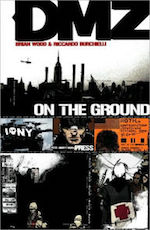 DMZ stands for De-Militarized Zone—an area that warring groups agree to keep free from military facilities, personnel, and activities. In the comic series by Brian Wood, Riccardo Burchielli, and others, a second civil war has erupted in the United States between the US Army, and the Free States Army made up of soldiers from Middle America. The titular DMZ is the island of Manhattan, where the 400,000 remaining residents struggle to eke out a living in the war-torn metropolis.
DMZ stands for De-Militarized Zone—an area that warring groups agree to keep free from military facilities, personnel, and activities. In the comic series by Brian Wood, Riccardo Burchielli, and others, a second civil war has erupted in the United States between the US Army, and the Free States Army made up of soldiers from Middle America. The titular DMZ is the island of Manhattan, where the 400,000 remaining residents struggle to eke out a living in the war-torn metropolis.
DMZ follows Matty Roth, a rookie journalist determined to cut his teeth in the DMZ, despite—or perhaps because of—the danger. The comic’s best moments, though, are when it focuses on the city’s other characters: delving into smaller stories, instead of trying to encompass the full breadth of the conflict. Whether it’s Zee Hernandez using her medical training to help the city’s occupants in any way she can, or Wilson using his reputation as a Triad member to keep Chinatown and its inhabitants safe, it’s these side stories that more fully explore the effect of the conflict on individuals and neighbourhoods, and the ways in which people can, and do, band together in times of hardship.
Zone One by Colson Whitehead
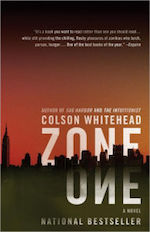 Colson Whitehead is an author of literary fiction, and in Zone One he brings his considerable talents to bear on one of the most over-used science-fiction subgenres of the past few years—the zombie apocalypse. Zone One, though, is about more than zombies and survival, or gritty anti-heroes and gory headshots; it’s about New York City, family, lost lives and halted careers, it’s about unlikely survivors, and finding a balance between survival and civility in a society that is slowly coming back from the brink of extinction.
Colson Whitehead is an author of literary fiction, and in Zone One he brings his considerable talents to bear on one of the most over-used science-fiction subgenres of the past few years—the zombie apocalypse. Zone One, though, is about more than zombies and survival, or gritty anti-heroes and gory headshots; it’s about New York City, family, lost lives and halted careers, it’s about unlikely survivors, and finding a balance between survival and civility in a society that is slowly coming back from the brink of extinction.
The book follows Mark Spitz, part of a three-person team sweeping a bullet-riddled and barricaded New York City for stragglers—zombies left behind after the marines performed their massive cull of the Manhattan hordes. But Zone One spends little time in the tense and dangerous present—instead giving precedence to carefully rendered memories of times past. Literary fiction often concerns itself with meditations on the mundane, or on misplaced nostalgia, but in Zone One these wistful remembrances are made important by their distance from the harrowing reality of the apocalypse. They’re also, perhaps, one of the few ways the survivors can maintain their humanity in times of horror, death, and decay.
As long as New York City looms large in our collective unconscious, you can be sure the city will continue to be on the receiving end of fictional chaos. What other broken NYCs have I missed?
 Corey J. White is a writer of science fiction, horror, and other, harder-to-define stories. He studied writing at Griffith University and is now based in Melbourne, Australia. His first book, Killing Gravity, is out in May. Find him at coreyjwhite.com and on Twitter at @cjwhite.
Corey J. White is a writer of science fiction, horror, and other, harder-to-define stories. He studied writing at Griffith University and is now based in Melbourne, Australia. His first book, Killing Gravity, is out in May. Find him at coreyjwhite.com and on Twitter at @cjwhite.









